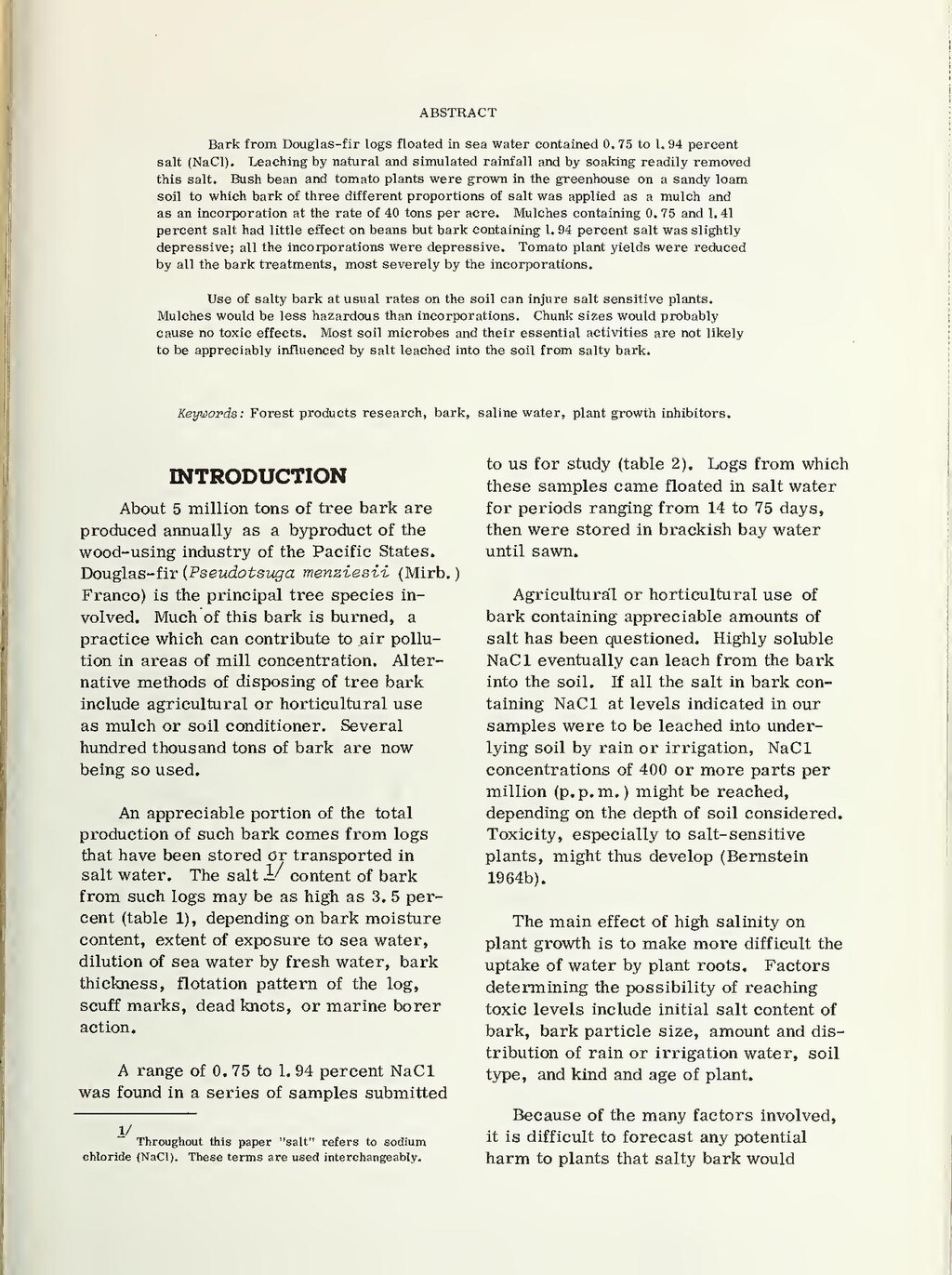ABSTRACT
Bark from Douglas-fir logs floated in sea water contained 0. 75 to 1. 94 percent salt (NaCl). Leaching by natural and simulated rainfall and by soaking readily removed this salt. Bush bean and tomato plants were grown in the greenhouse on a sandy loam soil to which bark of three different proportions of salt was applied as a mulch and as an incorporation at the rate of 40 tons per acre. Mulches containing 0. 75 and 1. 41 percent salt had little effect on beans but bark containing 1. 94 percent salt was slightly depressive; all the incorporations were depressive. Tomato plant yields were reduced by all the bark treatments, most severely by the incorporations.
Use of salty bark at usual rates on the soil can injure salt sensitive plants. Mulches would be less hazardous than incorporations. Chunk sizes would probably cause no toxic effects. Most soil microbes and their essential activities are not likely to be appreciably influenced by salt leached into the soil from salty bark.
Keywords: Forest products research, bark, saline water, plant growth inhibitors.
INTRODUCTION
About 5 million tons of tree bark are produced annually as a byproduct of the wood-using industry of the Pacific States. Douglas-fir (Pseudotsuga menziesii (Mirb.) Franco) is the principal tree species involved. Much of this bark is burned, a practice which can contribute to air pollution in areas of mill concentration. Alternative methods of disposing of tree bark include agricultural or horticultural use as mulch or soil conditioner.
An appreciable portion of the local production of such bark comes from logs that have been stored or transported in salt water. The salt[1] content of bark from such logs may be as high as 3.5 percent (table 1), depending on bark moisture content, extent of exposure to sea water, dilution of sea water by fresh water, bark thickness, flotation pattern of the log, scuff marks, dead knots, or marine borer action.
A range of 0.75 to 1.94 percent NaCl was found in a series of samples submitted to us for study (table 2). Logs from which these samples came floated in salt water for periods ranging from 14 to 75 days, then were stored in brackish bay water until sawn.
Agricultural of horticultural use of bark containing appreciable amounts of salt has been questioned. Highly Soluble NaCl eventually can leach from the bark into the soil. If all the salt in bark containing NaCl at levels indicated in our samples were to be leached into underlying soil by rain or irrigation, NaCl concentrations of 400 or more parts per million (p.p.m.) might be reached, depending on the depth of soil considered. Toxicity, especially to salt-sensitive plants, might thus develop (Bernstein 1964b).
The main effect of high salinity on plant growth is to make more difficult the uptake of water by plant roots. Factors determining the possibility of reaching toxic levels include initial salt content of bark, bark particle size, amount and distribution of rain or irrigation water, soil type, and kind and age of plant.
Because of the many factors involved, it is difficult to forecast any potential harm to plants that salty bark would.
- ↑ Throughout this paper "salt" refers to sodium chloride (NaCl). These terms are used interchangeably.
